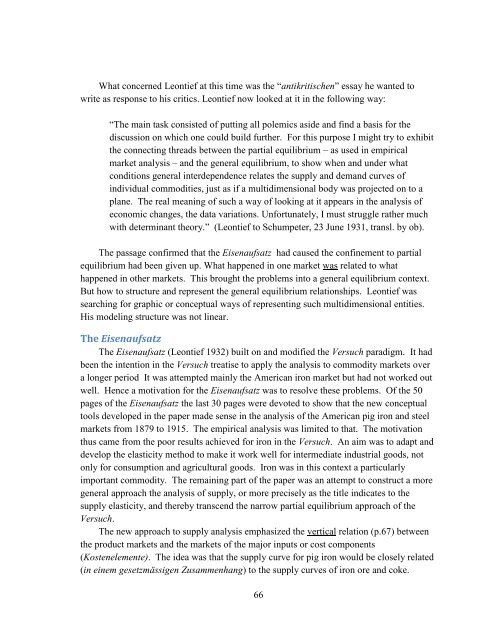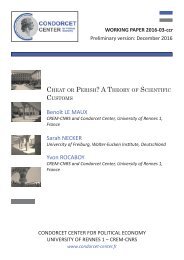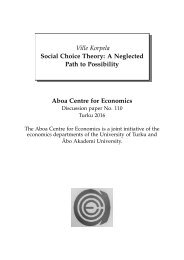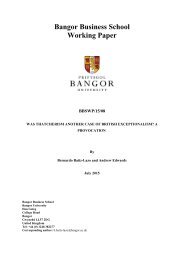MEMORANDUM
n?u=RePEc:hhs:osloec:2016_018&r=hpe
n?u=RePEc:hhs:osloec:2016_018&r=hpe
You also want an ePaper? Increase the reach of your titles
YUMPU automatically turns print PDFs into web optimized ePapers that Google loves.
What concerned Leontief at this time was the “antikritischen” essay he wanted to<br />
write as response to his critics. Leontief now looked at it in the following way:<br />
“The main task consisted of putting all polemics aside and find a basis for the<br />
discussion on which one could build further. For this purpose I might try to exhibit<br />
the connecting threads between the partial equilibrium – as used in empirical<br />
market analysis – and the general equilibrium, to show when and under what<br />
conditions general interdependence relates the supply and demand curves of<br />
individual commodities, just as if a multidimensional body was projected on to a<br />
plane. The real meaning of such a way of looking at it appears in the analysis of<br />
economic changes, the data variations. Unfortunately, I must struggle rather much<br />
with determinant theory.” (Leontief to Schumpeter, 23 June 1931, transl. by ob).<br />
The passage confirmed that the Eisenaufsatz had caused the confinement to partial<br />
equilibrium had been given up. What happened in one market was related to what<br />
happened in other markets. This brought the problems into a general equilibrium context.<br />
But how to structure and represent the general equilibrium relationships. Leontief was<br />
searching for graphic or conceptual ways of representing such multidimensional entities.<br />
His modeling structure was not linear.<br />
The Eisenaufsatz<br />
The Eisenaufsatz (Leontief 1932) built on and modified the Versuch paradigm. It had<br />
been the intention in the Versuch treatise to apply the analysis to commodity markets over<br />
a longer period It was attempted mainly the American iron market but had not worked out<br />
well. Hence a motivation for the Eisenaufsatz was to resolve these problems. Of the 50<br />
pages of the Eisenaufsatz the last 30 pages were devoted to show that the new conceptual<br />
tools developed in the paper made sense in the analysis of the American pig iron and steel<br />
markets from 1879 to 1915. The empirical analysis was limited to that. The motivation<br />
thus came from the poor results achieved for iron in the Versuch. An aim was to adapt and<br />
develop the elasticity method to make it work well for intermediate industrial goods, not<br />
only for consumption and agricultural goods. Iron was in this context a particularly<br />
important commodity. The remaining part of the paper was an attempt to construct a more<br />
general approach the analysis of supply, or more precisely as the title indicates to the<br />
supply elasticity, and thereby transcend the narrow partial equilibrium approach of the<br />
Versuch.<br />
The new approach to supply analysis emphasized the vertical relation (p.67) between<br />
the product markets and the markets of the major inputs or cost components<br />
(Kostenelemente). The idea was that the supply curve for pig iron would be closely related<br />
(in einem gesetzmässigen Zusammenhang) to the supply curves of iron ore and coke.<br />
66





